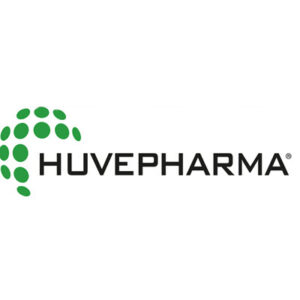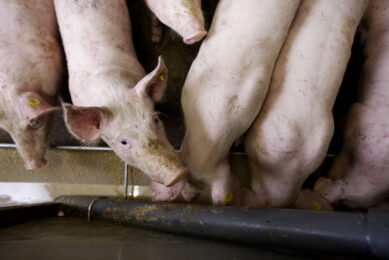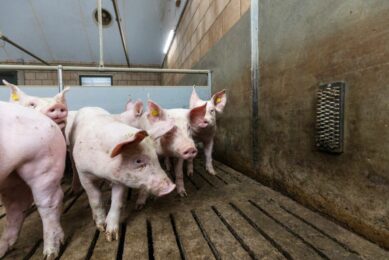Evaluating NSAIDs for oral use in pigs
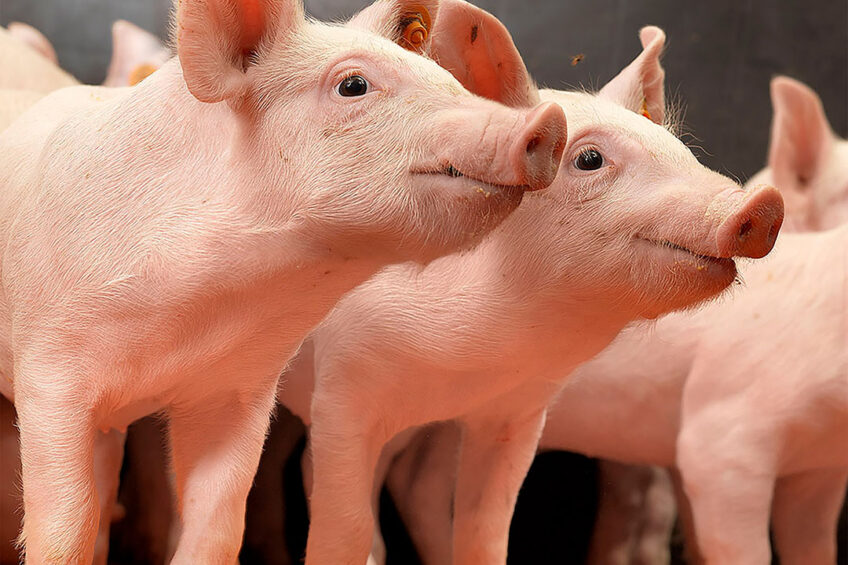
COX-1 and COX-2 are “iso-enzymes”, which have roles in the day-to-day life of pigs. Where COX-1 mainly has supportive features, COX-2 occurs when cells are damaged, leading to, for example, fever or pain. Non-steroidal anti-inflammatory drugs (NSAIDs) can suppress these iso-enzymes. Obviously, the trick is to get them to mainly tackle COX-2.
Physical and behavioural health management is the foundation for optimising the welfare of pigs. Consumers and various regulations demand better animal welfare. Poor welfare can lead to increased susceptibility to disease by initiating immunosuppression.
Inflammation, fever and pain may be provoked in the case of infections, lameness, farrowing, trauma and irritation. The oral administration of non-steroidal anti-inflammatory drugs (NSAIDs) suppresses these harmful conditions in different ways and improves the outcome of a simultaneous antimicrobial treatment.
Mode of action
NSAIDs inhibit the activity of 2 cyclo-oxygenase iso-enzymes, COX-1 and COX-2, which leads to a reduction in prostaglandin biosynthesis. Cell damage caused by infections, trauma and irritation results in the release of pro-inflammatory mediators like lipoxygenase and COX-2. COX-2 generates prostaglandins that provoke side effects like fever, inflammation and pain. COX-2 is an inducible enzyme typically activated in damaged and inflamed tissues. The inhibition of COX-2 accounts for nearly all therapeutic effects of NSAIDs.
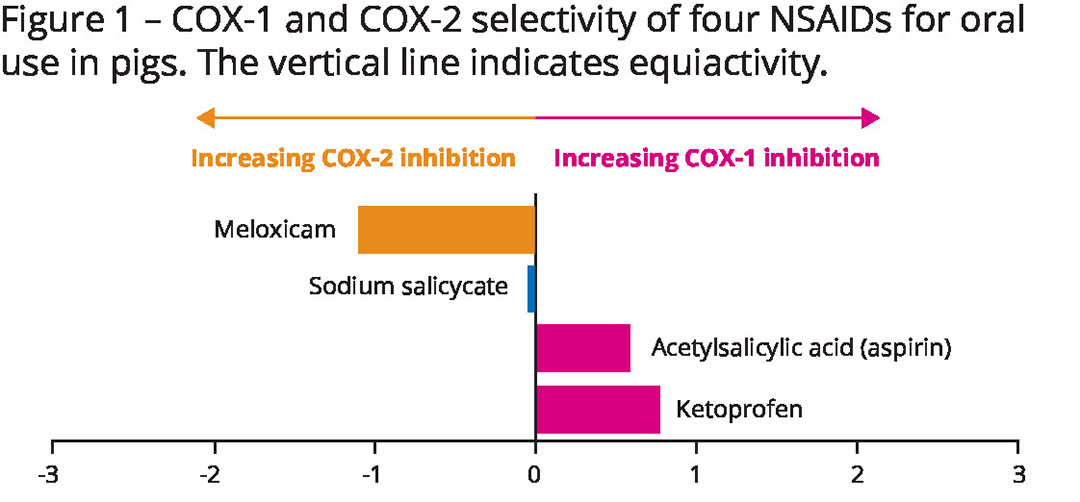
The isoform COX-1, however, is a constitutive enzyme found in almost all tissues that generates prostaglandins involved in the protection of the gastrointestinal mucosa. Moreover, COX-1 facilitates renal function and blood clotting by platelet aggregation. Hence, several adverse effects may be induced by the inhibition of COX-1. The COX inhibition pattern depends on the selected NSAID (see Figure 1). The different inhibitory effects of NSAIDs on COX-1 and COX-2 determine the outcome and possible side effects of an installed treatment (see Table 1).
Meloxicam demonstrates selective inhibition of COX-2 resulting in high potency and a broad safety margin. Other NSAIDs have a minor inhibitory effect on COX-2. Acetylsalicylic acid (aspirin) and ketoprofen inhibit COX-1 to a large extent. Sodium salicylate has an equal activity against both cyclo-oxygenases. As a result, the potency of these active compounds is lower, and harmful side effects like ulcers, gastrointestinal irritation, delayed blood clotting and renal toxicity are often reported in the field. Paracetamol demonstrates no anti-inflammatory properties and is not classified as an NSAID.
Meloxicam for oral use
Meloxicam is a widely used NSAID, exerting anti-inflammatory, antipyretic, analgesic and anti-exudative properties. In addition, cartilage reparative and anti-endotoxic effects are provided. The active substance accumulates in inflamed tissues and has a slow tissue depletion.
Huvepharma recently introduced Pyrocam 15 mg meloxicam/ml oral suspension for pigs. Pigs treated with meloxicam recover rapidly because the molecule is readily absorbed in the gastrointestinal tract. The oral bioavailability is 92% and the maximum plasma concentration is achieved 2.25 hours after a single oral administration. The daily oral dosage is 0.4 mg meloxicam/kg bodyweight corresponding to 2.7 ml/100 kg bodyweight for all categories of pigs, including sows.
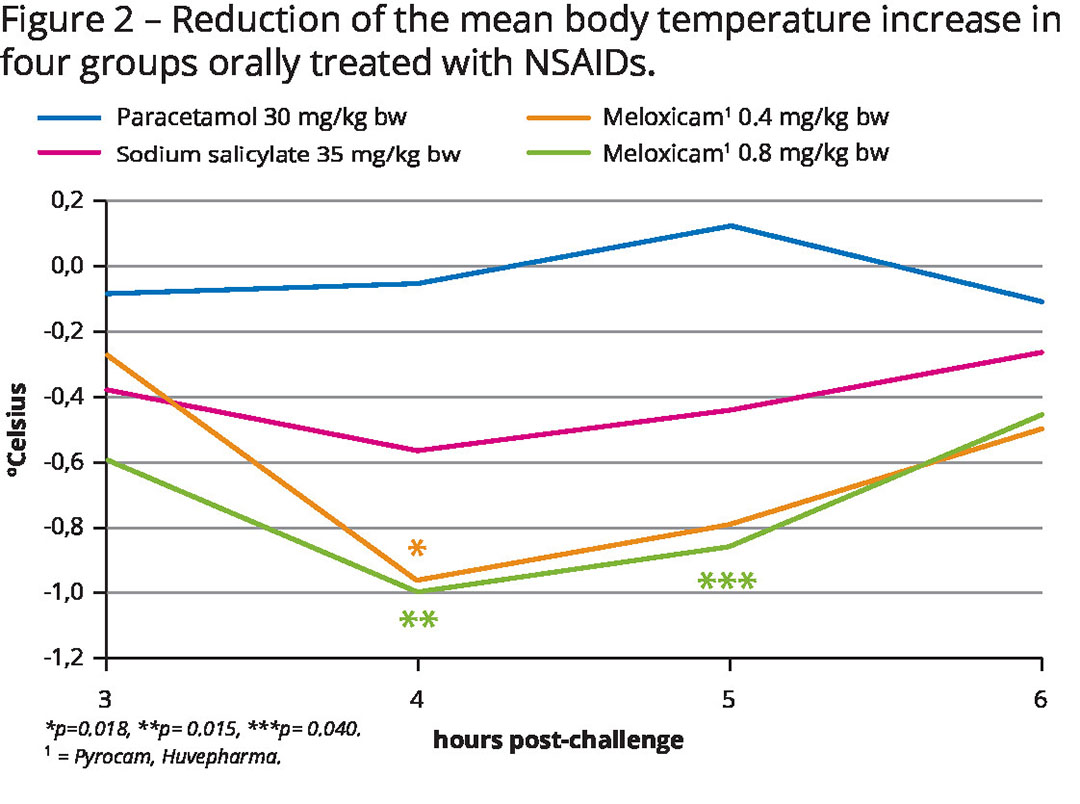
Antipyretic effect
The antipyretic effect of the oral suspension was investigated at a research institute. Pigs weighing 10 kg (five groups of eight pigs each) received two dose levels of meloxicam (0.4 and 0.8 mg/kg bodyweight), sodium salicylate and paracetamol (35 and 30 mg/kg bodyweight, respectively) via a single oral gavage. Six hours after treatment, the pigs were intravenously challenged with 10 µg lipopolysaccharide/kg bodyweight to evoke fever in a standardised way within a few hours.
The mean body temperature at the peak of fever was compared to the baseline temperature to calculate the mean body temperature increase (MBTI). The antipyretic effect was determined by comparing the MBTI reduction to a non-treated control group. Significant antipyretic effects were found in the pigs treated with this approach, unlike the sodium salicylate and paracetamol groups (see Figure 2). Moreover, a faster return to appetite and clinical recovery was demonstrated.
Conclusion
The properties of NSAIDs largely depend on their specific mode of action. Pyrocam 15 mg meloxicam/ml oral suspension delivers high potency and a broad safety margin based on the selective inhibition of COX-2.
References can be obtained upon request.


